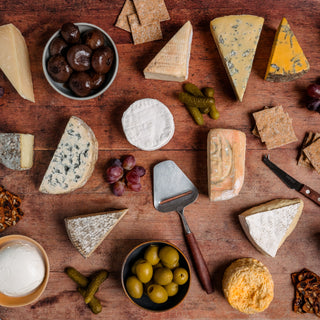The world of cheese is as vast as it is delicious, with varieties made from the milk of cows, goats, sheep, and even more exotic animals like buffalo, camels, and yaks. But one question that often pops up – and recently did in my own household thanks to my curious daughter – is this: Why don’t we make cheese from pig’s milk? After all, pigs are mammals, and like all mammals, they produce milk for their young. So, what's stopping us from turning that milk into cheese?
The Biology of Pig’s Milk: A Tricky Proposition
To start with, let’s break down what makes milk suitable for cheese-making. The key players here are protein and fat content, as well as the milk’s natural ability to curdle. Most of the milk used in cheese production comes from ruminant animals like cows, goats, and sheep. These animals have a specialised stomach system that efficiently converts grass into a type of milk rich in casein protein and butterfat, both essential for creating those delightful curds we turn into cheese.
Pig’s milk, however, is a different story. Though rich in fat, pig’s milk doesn’t contain the right kind of proteins in sufficient quantities to curdle effectively. The casein protein in pig’s milk is less abundant and doesn’t coagulate as easily as that from cows or goats. This makes the process of turning it into cheese far more challenging.
The Practicalities: Pigs Aren’t Designed for Milking
Even if pig’s milk had the perfect composition for cheese, there’s another significant hurdle: milking the pigs themselves. Unlike cows, goats, or sheep, pigs are not naturally predisposed to be milked by humans. Their teats are small and their temperament, well, let’s just say they’re not as patient as a dairy cow standing in a milking parlour. Piglets nurse frequently and with vigour, but replicating this in a way that’s efficient and safe for human dairy production is practically impossible.
Moreover, pigs don’t produce large quantities of milk like cows. A dairy cow can produce up to 30 litres of milk per day, whereas a pig might only produce around 6 litres at most, which is a minuscule amount when considering the needs of commercial cheese-making.
The Flavour Factor: Would Pig’s Milk Cheese Even Taste Good?
But let’s entertain the idea that we could overcome these practical and biological barriers. What would pig’s milk cheese taste like? The truth is, no one really knows. With so little available milk and the challenges in getting it to coagulate properly, pig’s milk cheese remains largely unexplored. Some suggest it might be richer and gamier than cow’s milk cheese, possibly with a slightly sweet or nutty flavour, given the milk’s high-fat content. However, this is purely speculative.
Cultural and Ethical Considerations
Even if pig’s milk cheese were possible, there’s the question of whether it would be culturally acceptable. Cheese is not just food; it’s steeped in tradition and heritage. The animals we traditionally milk – cows, goats, and sheep – have long histories intertwined with human agriculture. Pigs, on the other hand, have been primarily raised for their meat. Shifting perceptions and culinary traditions to include pig’s milk cheese would be a monumental cultural shift.
There are also ethical considerations. Pigs are intelligent, social animals, and the demands of dairy farming might not align well with their welfare. Ensuring humane treatment while milking pigs could be complex and controversial.
So, What’s the Final Word?
In short, while pigs are fascinating creatures with many culinary uses, cheese-making is unlikely to be one of them. The biological, practical, and cultural challenges make pig’s milk cheese more of a theoretical curiosity than a feasible product.
So next time you enjoy a rich, creamy piece of cheese, whether it’s from a cow, goat, or sheep, you can appreciate the natural harmony between these animals and the cheese-making process – a harmony that, for pigs, simply doesn’t exist.
Still curious? Next time you visit, ask us about the more unusual types of cheese we do offer – you might just discover a new favourite!

